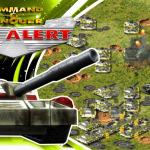The Kirov Airship stands as one of the most iconic and formidable units in the Command & Conquer: Red Alert (C&C:RA) series. Though purely fictional, its imposing zeppelin design and devastating firepower have made it instantly recognizable among RTS enthusiasts. Popularized in titles like Red Alert 2 and its expansions, the Kirov has become synonymous with Soviet might and late-game domination. Its dramatic entrances and the infamous “Kirov reporting!” audio cue have helped it cement a place not just as a game unit but as a cultural icon within strategy gaming communities worldwide.
With a reputation as the Soviet’s ultimate endgame weapon, the Kirov Airship encapsulates the thrill and tactical depth of Red Alert’s aerial combat. This article explores its definition, characteristics, gameplay mechanics, strategic use, counters, and lasting legacy.
Profile of the Kirov Airship: Definition, history, and core stats
Among all the iconic units in the Command & Conquer: Red Alert series, few are as memorable as the Kirov Airship. Known for its slow yet devastating presence in the skies, the Kirov embodies Soviet military power and late-game dominance. More than just a unit, it symbolizes overwhelming force, designed to break defenses and strike fear into opponents. To fully understand its impact, let’s explore what the Kirov Airship is, its origins, and the defining stats that make it one of the most feared units in Red Alert history.
What is the Kirov Airship?
The Kirov Airship is a heavily armored Soviet air unit featured in the Command & Conquer: Red Alert franchise. Designed as a slow but powerful flying fortress, it delivers massive area damage with its powerful bombs. Primarily deployed during late-game phases, it serves as a fearsome siege weapon against enemy bases, capable of withstanding significant anti-air fire.
The table below summarizes its key attributes:
Kirov Airship At-a-Glance
Game Debut: Red Alert 2 (RA2)
Faction: Soviet Union
Unit Type: Heavy Airship/Bomber
Hit Points (HP): Approximately 2300
Speed: Slow (hover-like flight)
Attack Type: Area Bombing (high damage, splash effect)
Role: Endgame siege unit
Unique Features: High durability, slow speed, massive damage output
Origins and design inspirations
The Kirov Airship draws inspiration from historical Soviet airship concepts and iconic zeppelins of the early 20th century. Its name references Sergey Kirov, a prominent Soviet leader, evoking themes of Soviet strength and industrial might. The design merges Cold War-era military aesthetics with retro-futuristic dirigible forms, intentionally emphasizing size and intimidation.
Key design influences include:
- Historical Soviet airships and rigid dirigibles used for reconnaissance and bombing in early Soviet aviation history.
- The cultural practice of naming Soviet military hardware after revolutionary figures to boost morale and ideological symbolism.
- Developer interviews hint at a conscious choice to blend slow-moving but heavily armored units, distinct from conventional fast jets, to create dramatic tension.
This careful blend creates authenticity within the fictional world, enriching the unit’s presence on the battlefield.
The Kirov Airship in gameplay: Abilities, weaknesses, and famous mechanics
In the heat of a Red Alert battle, few moments are as intimidating as the sudden appearance of a Kirov Airship drifting slowly across the map. Its arrival signals imminent destruction, forcing players to react quickly or risk losing critical infrastructure in seconds. While its raw power and durability make it one of the most iconic late-game units in the series, the Kirov is not without its limitations. To truly master or counter this legendary airship, you need to understand its battlefield role, signature abilities, and the weaknesses that seasoned players exploit.

Role and function in Red Alert games
The Kirov Airship functions as a uniquely fearsome late-game unit known for its slow speed and extreme durability. Its main role is base destruction, employing a devastating bombing payload that can cripple structures in seconds.
- Its slow movement makes it vulnerable but also allows careful tactical deployment.
- Massive hit points enable it to tank considerable damage while bombing key enemy installations like power plants or defense buildings.
- The unit’s “shock and awe” factor is bolstered by its iconic voice line, “Kirov reporting!” which adds psychological pressure on opponents.
- Compared to other air units such as MiGs or Harriers, the Kirov trades speed for raw destruction and survivability.
Whether used offensively or as a backup in protracted battles, its presence often forces enemies to divert resources to anti-air defenses.
Famous weaknesses and in-game counters
The Kirov’s strength is balanced by distinct vulnerabilities. Its slow speed can render it an easy target for anti-air units and static defenses. It’s relatively expensive, making unsuccessful deployments costly.
Strengths vs. weaknesses
- Strengths: High durability, massive splash damage, psychological impact.
- Weaknesses: Slow speed, susceptible to concentrated anti-air fire, high production cost.
Effective counters include:
- Allied units such as Patriot missile systems and IFVs (Interceptors) efficiently shoot Kiov Airships down.
- Yuri faction tools like Mirage Tanks provide stealth counterplay by obscuring attack vectors.
- Mass flak troopers and fighter interceptors can also reduce Kirov effectiveness.
Community anecdotes often joke that massing Patriots can “shut down any Kirov rush,” highlighting the importance of layered air defense.
How to lead a devastating Kirov Assault (advanced attack strategies)
Preparing and deploying your Kirov fleet
Launching a successful Kirov assault requires careful planning and support. Follow these steps:
- Build a protected production line to assemble multiple Kirovs — a single unit’s presence is rarely decisive.
- Compose your fleet with escort fighters (MiGs or Flak Troopers) to shield Kirovs from interceptors and anti-air defenses.
- Scout enemy base layouts early to identify weak air defense zones and prioritize targets like power plants or tech buildings.
- Use multiple attack routes when possible to split enemy fire and maximize destruction.
- Time your assault to coincide with distracting ground attacks, reducing the chance of the enemy focusing solely on your air fleet.
For example, in high-level online matches, players often divert attention with tank waves before sending in multipronged Kirov fleets to overwhelm defenses.
Dealing with enemy defenses and micro-management tips
Effective micro-management can dramatically improve Kirov survival rates. Some pro tips include:
- Avoid flying directly over concentrated anti-air zones. Instead, use detours or feint attacks to bait enemy flak fire.
- Change Kirov paths slightly to reduce predictability and prevent mass targeting from surface-to-air missiles.
- Pull back Kirovs if heavy AA presence develops near targets and redeploy after neutralizing defenses with other units.
Adaptive decision-making ensures your Kirovs remain a persistent threat without unnecessary losses.
Effective Anti-Kirov tactics: How to stop a Kirov attack
Building an effective Anti-Air defense
Stopping a Kirov onslaught requires solid layered defenses implemented early:
- Build Patriot missile batteries (Allied) or Flak Cannons (Soviet) strategically to cover vulnerable approaches.
- Use radar and scouting units to detect Kirov movements early and prepare your defenses accordingly.
- Position anti-air units near critical infrastructure for maximum protection.
- Upgrade your anti-air weapons where possible to increase firing rate and damage.
Anti-Kirov defense checklist
Early Warning: Radar active✓
Scouts deployed✓
Patriots/Flak spread✓
Air Interceptors patrolling✓
Upgrade AA weapons✓
Community-proven tricks for neutralizing Kirovs
Players have devised quick and effective methods to counter Kirov attacks:
- Stacking multiple anti-air units tightly to maximize damage output.
- Grouping interceptor aircraft efficiently to shoot down Kirovs before they reach targets.
- Splitting high-value targets to force Kirovs to choose, reducing overall damage.

Memes in the community emphasize how “Kirov rushes crumble under mass Patriots,” underscoring air defense’s critical role.
The legacy of the Kirov airship: Cultural impact & RTS legend
The Kirov’s status in RTS and gaming history
The Kirov Airship transcended its role as a game unit to become a symbol of RTS spectacle and Soviet dominance. Its memorable voice lines and unique presence made it a fan favorite and an internet meme.
- “Kirov reporting!” became one of the most recognizable phrases in RTS gaming.
- It inspired modders to create variants and custom airships in fan-made content.
- Appearances and references outside the game include strategy forums, streaming communities, and even gaming merchandise.
Its design influenced later games to include heavily armored flying units with high impact, blending gameplay and cultural resonance.
How the Kirov shaped the Red Alert franchise
From Red Alert 2 to Red Alert 3 and spin-offs, the Kirov evolved in design and function, shaping the Soviet faction’s identity. Developer interviews reveal that the Kirov was deliberately kept slow to balance its destructive power and maintain strategic depth. Its unique mechanics inspired later units emphasizing strategic weight rather than speed. This unit helped define the franchise’s tone, mixing Cold War aesthetics with over-the-top strategy.
Patch notes and expansions often tweaked Kirov stats to keep gameplay balanced, reflecting its central role in competitive and casual play.
Supplemental Q&A: Essential Kirov airship questions answered
Is the Kirov airship real?
No, the Kirov Airship is a fictional creation exclusively found within the Command & Conquer: Red Alert series. While inspired by historical Soviet airships, it does not exist in real-world military arsenals.
What makes the Kirov airship unique among Air units?
Unlike typical fast air units, the Kirov distinguishes itself with extreme durability, slow speed, and devastating area splash damage. This combination creates a unique playstyle focused on base sieges and psychological intimidation rather than quick strikes.
How do I counter a mass Kirov attack effectively?
The best counters involve layering anti-air defenses like Patriot missile batteries, deploying interceptor units, and maintaining radar scouting for early warning. Splitting targets and efficient micro-management of anti-air units minimize the Kirov’s impact.
Why is it called “Kirov”?
The name “Kirov” references Sergey Kirov, a prominent Soviet leader. Naming the airship after him reflects Soviet tradition of associating military hardware with revolutionary figures, adding cultural and ideological weight to the unit.
Conclusion
The Kirov Airship is more than just a late-game unit-it’s a symbol of the Command & Conquer: Red Alert franchise itself. From its origins and unique design to its role in gameplay as a slow but devastating siege weapon, the Kirov embodies both power and vulnerability. In battle, it represents the ultimate test of timing: devastating when deployed correctly, but costly if countered. Players who master its use-or learn to counter it effectively-gain a decisive edge in competitive matches.
Beyond mechanics, the Kirov has left an enduring cultural mark, remembered for its dramatic presence, iconic voice line “Kirov reporting!”, and countless appearances in community memes and tournaments. It stands as proof of how a single unit can influence both strategy and gaming culture for decades.
As you continue exploring Red Alert strategies, whether through offensive Kirov assaults or anti-air defenses to stop them, remember that mastering iconic units is part of what makes RTS games timeless. Want to dive deeper into more guides and classic RTS content? Keep following along with our updates on Softbuzz for insights that help you sharpen your play and relive the legends of strategy gaming.










